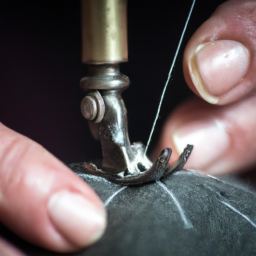
History of the Sewing Machine in America
The sewing machine is a revolutionary invention that has greatly impacted the textile industry around the world.
In America, the history of the sewing machine is intertwined with the technological advancements and industrial
revolution of the 19th century.
The first functioning sewing machine was invented in 1790 by English inventor Thomas Saint. However, it wasn’t
until the mid-19th century that sewing machines gained popularity in America. In 1846, Elias Howe, an American
inventor, patented a machine that featured the “lockstitch” mechanism, which is still widely used today. This
invention revolutionized the efficiency and speed of textile production.
Soon after Elias Howe’s invention, other sewing machine manufacturers emerged in America. Isaac Merritt Singer,
an entrepreneur and inventor, played a significant role in popularizing sewing machines. In 1851, Singer
improved upon Howe’s design and received a patent for his own sewing machine. His machine incorporated several
innovative features, such as a foot pedal and a horizontally mounted needle. Singer’s sewing machines became
immensely successful due to their efficiency, reliability, and ease of use.
The widespread use of sewing machines had a profound impact on the textile industry in America. It not only
increased production rates but also enabled individuals to create their own clothing at home. Sewing machines
became more affordable and accessible to the general population, empowering women in particular who were able
to contribute to their household income by working as seamstresses or establishing their own small sewing
businesses.
As technology continued to advance, sewing machines evolved further. Electric sewing machines were introduced in
the early 20th century, replacing the manual-operated ones. These machines further improved productivity and
ease of use.
Today, sewing machines are still widely used by professionals and hobbyists. They have become more advanced,
offering a wide range of features and capabilities, including computerized controls, embroidery functions, and
automatic thread cutting. Despite the numerous innovations, the core mechanism of the sewing machine remains
fundamentally unchanged.
The history of the sewing machine in America represents a significant milestone in the industrial development
of the nation. It not only transformed the textile industry but also played a crucial role in empowering people,
especially women, by providing them with opportunities for economic advancement.






Amazing history, can’t wait to read more!
John Doe: Fascinating article!
Great article! It’s incredible to think how much presence the sewing machine has had in American history and culture and it’s so interesting to learn more about its evolution over time.